Disclosure: Meeple Mountain received a free copy of this product in exchange for an honest, unbiased review. This review is not intended to be an endorsement.
The Corporate Lunar Race
Lunar Rush is a thrilling simultaneous–play worker placement/bidding game for up to four players. In it, players take on the roles of megacorporations that have recently discovered the valuable crystals and ore hidden on the Moon. As they are wont to do, the corporations throw care aside in a mad dash to the moon to open shipping lanes, build moon bases, and ultimately increase their profits.
Each round in Lunar Rush, players bid for initiative using bid cards. From highest to lowest, bidders win priority in turn order and pay the cost for their bids. Different routes will arrive at different times. Fast routes arrive almost immediately but can hold less cargo. Conversely, slow routes take a few turns to reach their destination but can carry more stuff. Then, in turn order, players choose any available route to claim. Routes are either moonbound or earthbound, referring to whether they are leaving to head to the Moon from Earth or vice versa. After everyone has chosen two routes, players simultaneously load up their ships on Earth with astronauts (workers) or items needed for modules and upgrades, and then they move their ships from Earth along the routes to the moon. Afterward, the moon phase happens simultaneously, with players building modules and producing resources. Each player begins the game with the six basic modules that can be upgraded and replaced as the game goes on. Then, earthbound ships are loaded with resources to sell and sent back to Earth. After seven turns, the winner is the player who has accumulated the most wealth.
Money, Markets, and Moon Rocks
As goods arrive on Earth from the Moon, ships offload their wares onto the market. The ships on the fast lanes have priority, selling their items first and collecting credits equal to the current market price. The trick, however, is that after a single ship is done selling its wares, the market fluctuates. As more goods are sold, prices decrease because there’s more supply, meaning later deliveries are less valuable. Luckily, there will be price refreshes at specific breakpoints, moving the markets back a few spots to regain some lost value.
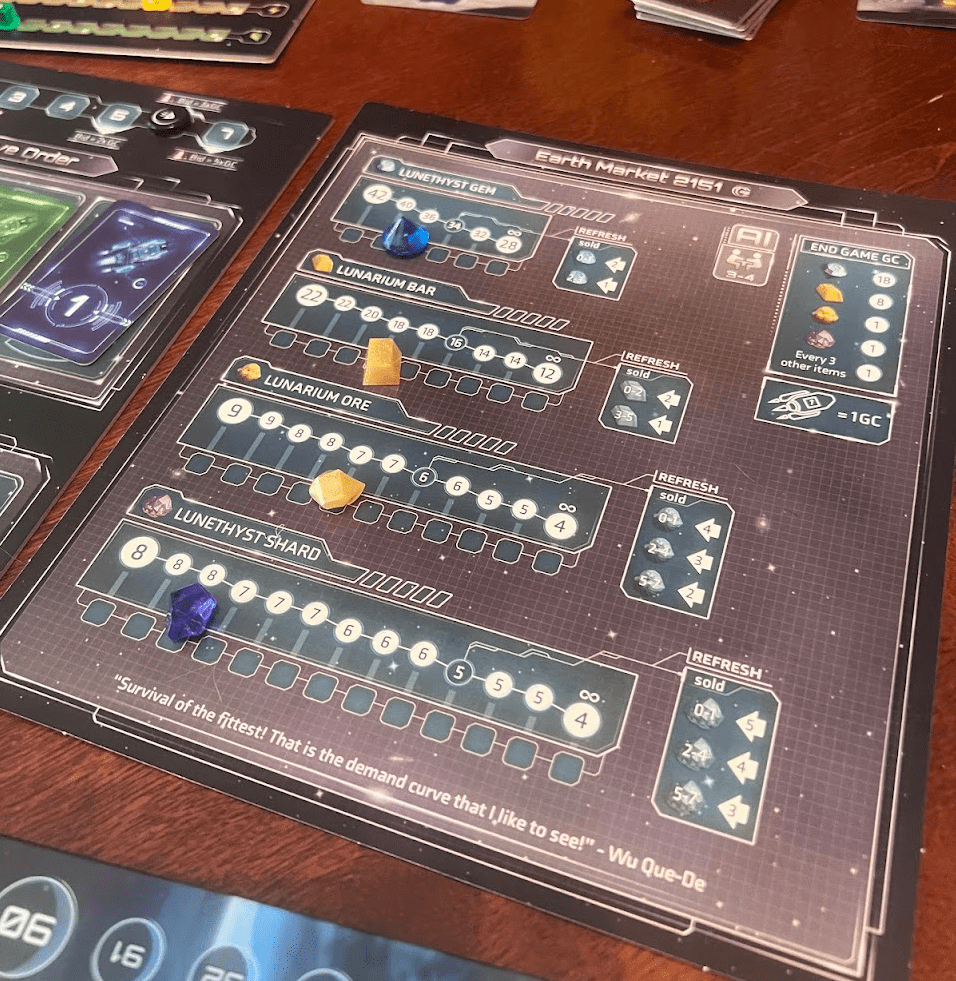
Manipulating the market is where the bulk of the strategy comes from in Lunar Rush, and it is a fascinating blend of mechanics. It’s part worker placement, figuring out where to spend your astronauts to maximize your production; it’s part auction, balancing your needs with the capital investment to secure shipping priority (especially in later rounds, where bidding costs increase exponentially). It’s part market manipulation, ensuring the highest value for you and the lowest value for your opponents. It’s a strategic, cutthroat, yet ultimately fair capitalistic move to see your opponent has a nice, fat shipment of ore arriving next turn in the slow shipment lane. In response, you drop a shipment of ore in the fast lane to artificially push down prices before your opponent’s payday arrives. Winning in Lunar Rush requires a watchful eye to see what your opponents are doing and playing slightly reactionary to capitalize on their blind spots.
Shooting for the Stars
The components for Lunar Rush are fun and shiny. We were provided the deluxe edition containing fun upgrades over the default components. As someone who is a sucker for shiny bits, I do have to say these left something to be desired. The upgraded meeples and cube bits have little icons printed on them but are the same as the core components. Furthermore, the moon resource bits are a downgrade from the base game. While the base game uses a combination of small and large cubes in two different colors, the upgraded deluxe components use plastic pieces shaped like the resources. While this works fine for the bars and jagged ore bits of “Lunarium,” the “Lunethyst” gems and shards are too similar at first glance and cause confusion. We swapped to the default bits instead after a playthrough because they were easier to see at a glance.
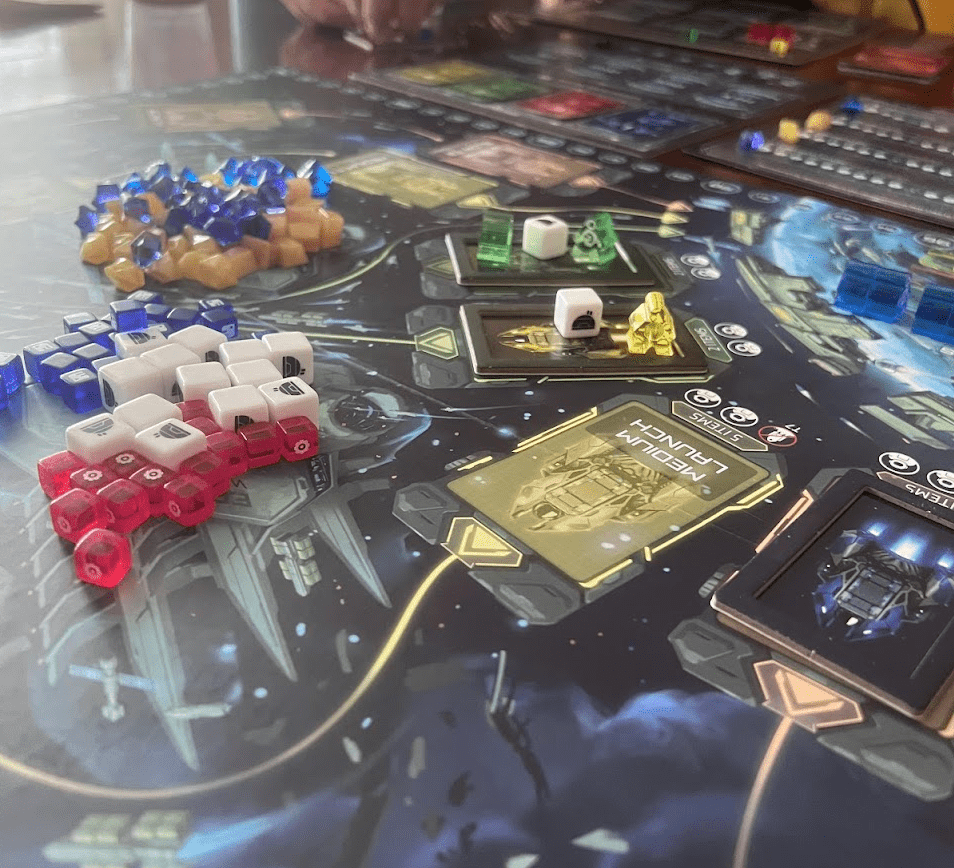
The setup in the book also recommends creating haphazard piles of resources in the middle of the game board. In my playthroughs, this caused a lot of mess and confusion, and in the chaos of simultaneous turns, it often resulted in someone grabbing something they didn’t mean to or knocking things around. And since blue cubes are used for two different resources, that could be… problematic. Ultimately, Lunar Rush is a game with a lot of motion. The simultaneous turns create a constant frenetic energy in the game as you reach across your opponents to grab goods or move ships. The moments where the game slows down to do things in turn order or let people bid are almost brief, welcome respites where you can collect your thoughts and figure out what to do next.
And that, ultimately, will be what decides if this game is for you. Playing a long, proactive strategy in this game proves difficult because the status quo constantly changes. Last turn, perhaps it was a good idea to send your shipment on a long route. This turn, someone else is sending it on the medium rote, which will preempt your big shipment. Do you then slam a tiny shipment onto the short route this turn to preempt your preempt-er, even if it hurts you further? And as you’re calculating all that, you need to think about what jobs you’re giving your astronauts that turn, what that means for what you’ll be able to ship the following turn, and what modules you’ll be able to build. It’s not a complex game, but the constant sense of motion creates complexity out of what are, on the surface, simple decisions. It reminds me somewhat of Millennium Blades, another game that uses simultaneous turns to increase mental load as part of a specific design choice. To its credit, Lunar Rush does slow down occasionally to give you time to breathe.
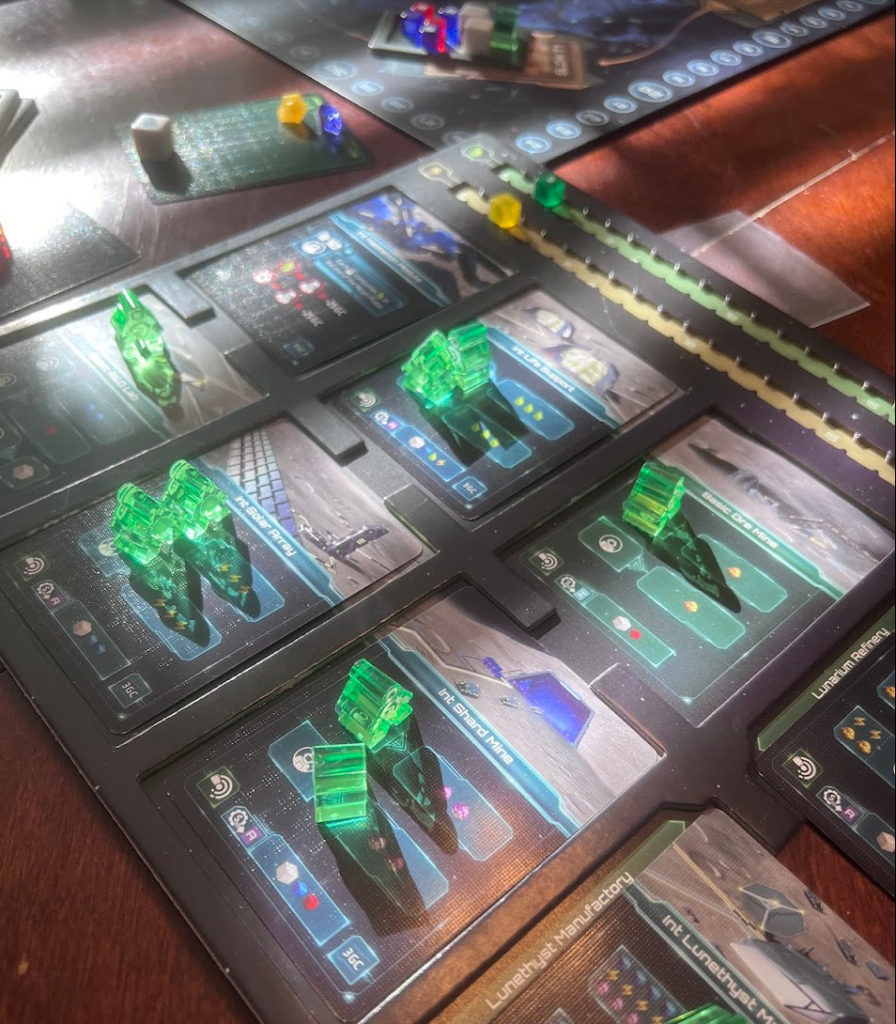
My play group happened to love Lunar Rush and connected with its energy. Even the most “Take That!”-averse players seemed to enjoy the game’s speed and keeping things moving. For my group at large, it resonated. For me, personally, it was a fun splicing of a few mechanics in ways I hadn’t seen before, but I walked away wishing it had spent just a bit more time in the oven. But that’s down to taste – I don’t like my pasta al dente. The resource components and overall structure/management of the game were a bit too messy for my liking. Usually, that wouldn’t stick out to me, but not having an organized play area is more noticeable when the game is also frenetic. I also wish the module upgrades had more variety to enable more “build paths” or strategies. Lunar Rush will earn its place on my shelf for a while, which is impressive for a designer’s first game, and I’m keeping an eye on what Steven “Skippy” Brown cooks up next.


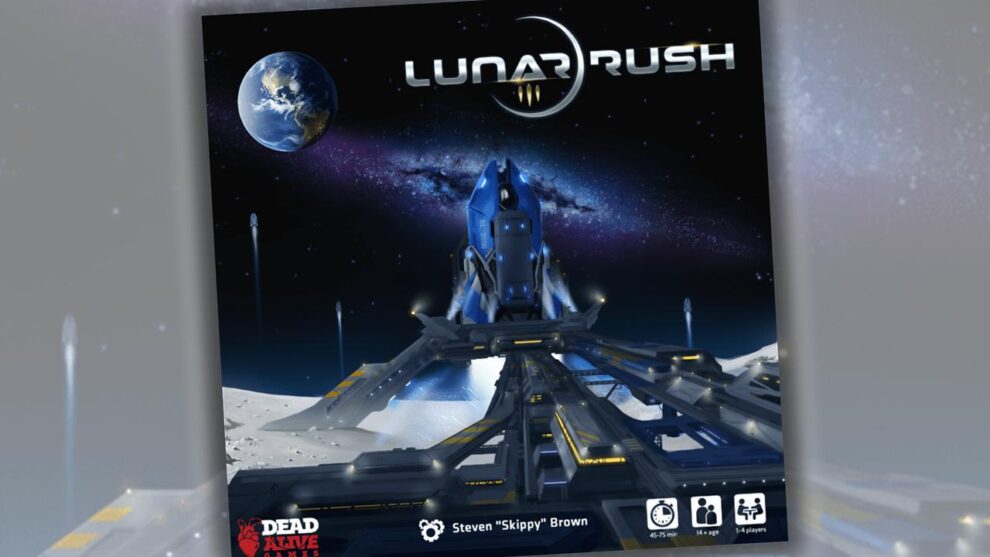

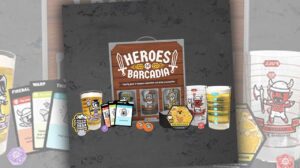
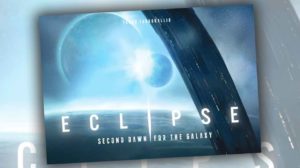
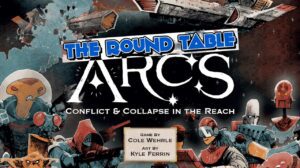





Thank you for the review of Lunar Rush! Glad you enjoyed it!